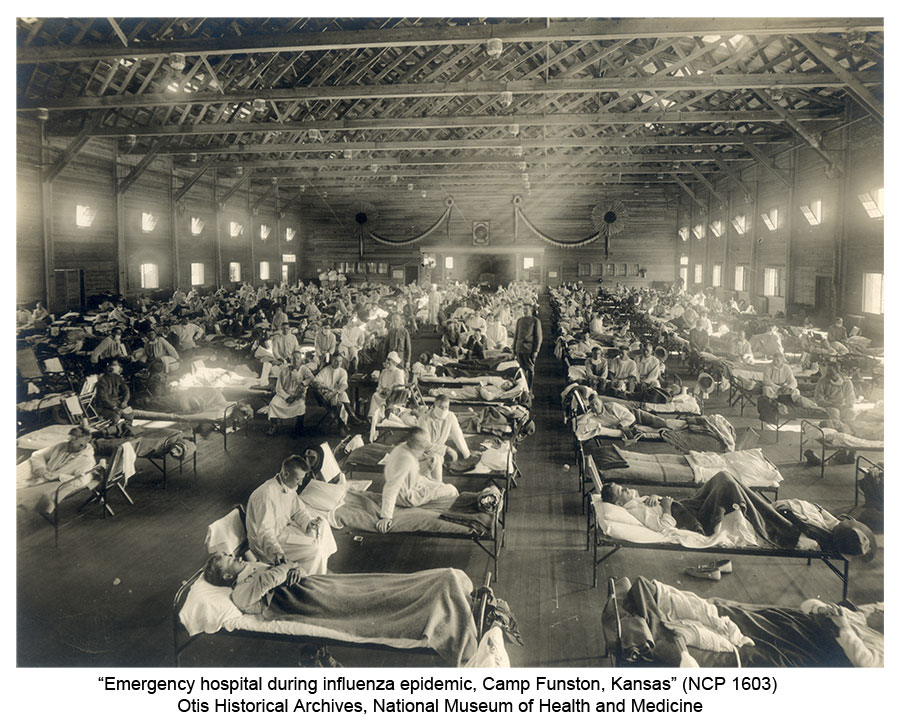Why it's advisable to avoid unnecessary personal contact and washing hands frequently to reduce the risk of catching the Coronavirus (Covid-19) and pass on the flu to others.
The death rate of Covid-19 is at the moment 3.4% (3,119 deaths among 90,933 cases), which is much higher then an ordinary flu where the death rate is about 0.1%. In comparison, the death rate of the Spanish flu is estimated to have been 2-3%. The Spanish flu was a pandemic that killed 40-100 million people between 1918 to 1920.
The 1918 influenza pandemic (January 1918 – December 1920; colloquially known as Spanish flu) was an unusually deadly influenza pandemic, the first of the two pandemics involving H1N1 influenza virus, with the second being the swine flu in 2009. It infected 500 million people around the world, or about 27% of the then world population of between 1.8 and 1.9 billion, including people on isolated Pacific islands and in the Arctic. The death toll is estimated to have been 40 million to 50 million, and possibly as high as 100 million, making it one of the deadliest epidemics in human history. (wikipedia.org - Spanish flu)
More than 100 years ago, when a new flu-like disease emerged, the initial response in Spain was to laugh it off.
- - -
The first stage of infection in 1918, equivalent to where we are with the coronavirus, was in fact not the most deadly. With the arrival of summer, the epidemic subsided, but in the fall it returned with a vengeance. The health system was overwhelmed, and at a time when many people were still living in the countryside, rural doctors were scarce; when they died, they were rarely replaced. Then as now, volunteers were recruited from among medical students.
The official death toll of the 1918 flu in Spain, a country of just over 20 million inhabitants at the time, was terrifying. In 1918 it killed 147,114 people; the following year, it took 21,245 lives and in 1920, it killed 17,825. The epidemic lasted three years and it particularly targeted people in their 20s who were completely healthy. (english.elpais.com - The surprising similarities between the ‘Spanish flu’ and the coronavirus pandemic)
There were no lockdown of entire countries during the Spanish flu.
In 1918, there were no treatments for influenza and no antibiotics to treat complications such as pneumonia. Hospitals were quickly overwhelmed.
There was no centrally imposed lockdown to curb the spread of infection, although many theatres, dance halls, cinemas and churches were closed, in some cases for months.
Pubs, which were already subject to wartime restrictions on opening hours, mostly stayed open. The Football League and the FA Cup had been cancelled for the war, but there was no effort to cancel other matches or limit crowds, with men's teams playing in regional competitions, and women's football, which attracted large crowds, continuing throughout the pandemic.
Streets in some towns and cities were sprayed with disinfectant and some people wore anti-germ masks, as they went about their daily lives.
(www.bbc.com - Coronavirus: How they tried to curb Spanish flu pandemic in 1918)
Covid-19 had its outbreak in China. To start with the new flu was ignored and the young doctor who was the whistle-blower was punished by the local authorities. When the flue was recognized by the Chinese authorities, then they took sever actions to avoid the flu to be spread and to develop into a pandemic. The Covid-19 flu has now been spread to many countries around the world. At the moment Italy is the country in Europe with the highest number of infected and dead people.
How the COVID-19 (Coronavirus) can be spread:
- Directly, through contact with an infected person’s body fluids (for example, droplets from coughing or sneezing)
- Indirectly, through contact with surfaces that an infected person has coughed or sneezed on and which are, therefore, contaminated with the virus
Caution is advisable since it is a new virus and we do not know how easily the virus spreads from person to person. Neither do we know if someone can spread the virus before they show symptoms.
How to protect oneself:
- Wash your hands frequently with soap and water or use an alcohol-based hand rub if your hands are not visibly dirty
- Practice good respiratory hygiene, that is, when coughing and sneezing, cover your mouth and nose with flexed elbow or tissue – discard tissue immediately into a closed bin and clean your hands with alcohol-based hand rub or soap and water
- Maintain social distancing, that is, leave at least 1 metre (3 feet) distance between yourself and other people, particularly those who are coughing, sneezing and have a fever
- Avoid touching your eyes, nose and mouth – if you touch your eyes, nose or mouth with your contaminated hands, you can transfer the virus from the surface to yourself
(www.gov.ie - COVID-19 (Coronavirus): Advice)
Having clean hands is the best way to stop the spread of harmful germs. Use soap and water or alcohol hand rub to clean your hands regularly.
How to wash your hands with soap and water:
- Wet your hands with warm water and apply soap.
- Rub your hands together until the soap forms a lather.
- Rub the top of your hands, between your fingers and under your fingernails.
- Do this for about 15 seconds.
- Rinse your hands under running water.
- Dry your hands with a clean towel or paper towel.
(www2.hse.ie - How to clean your hands)
Related articles:



